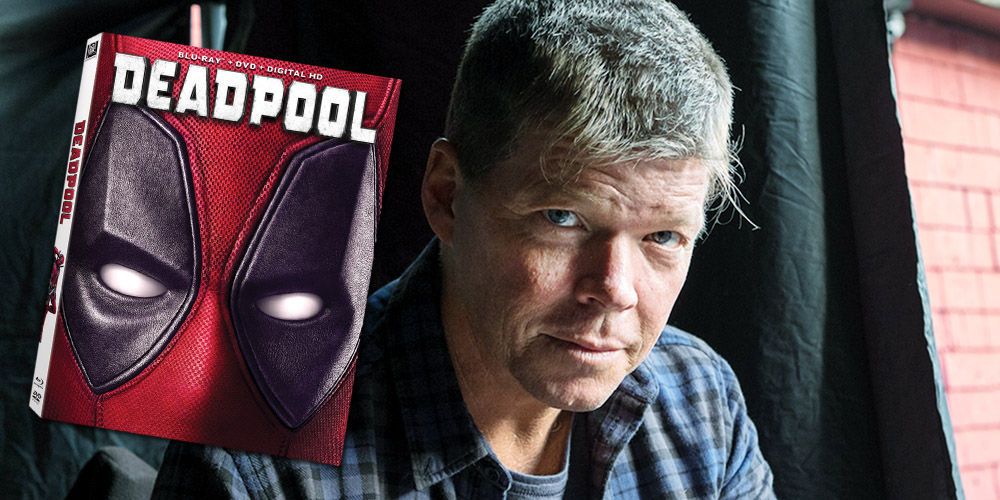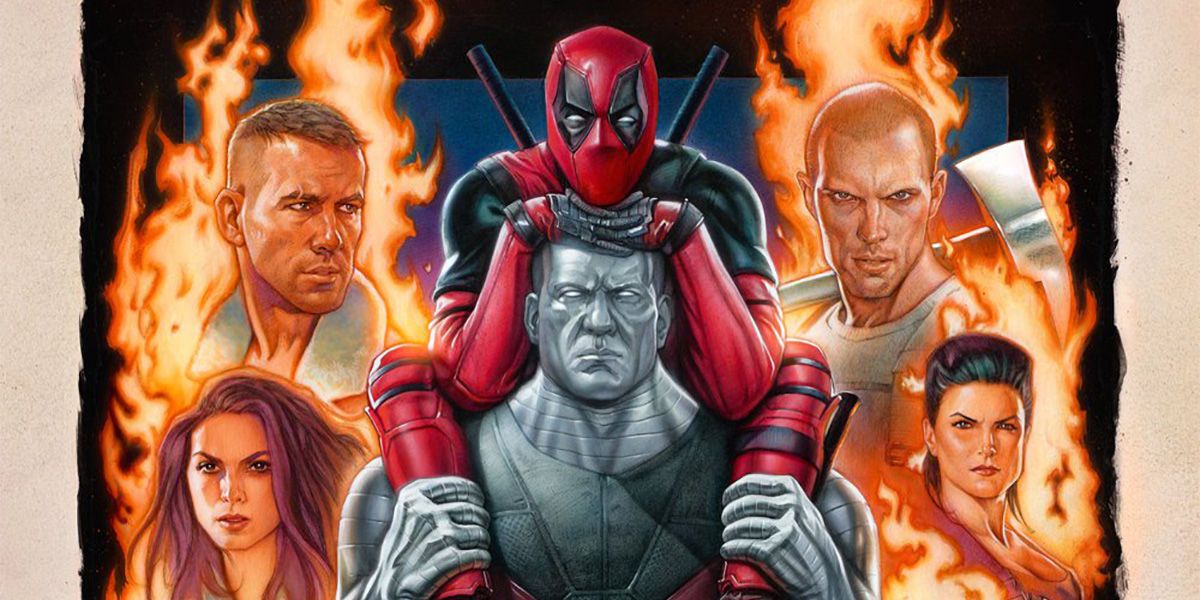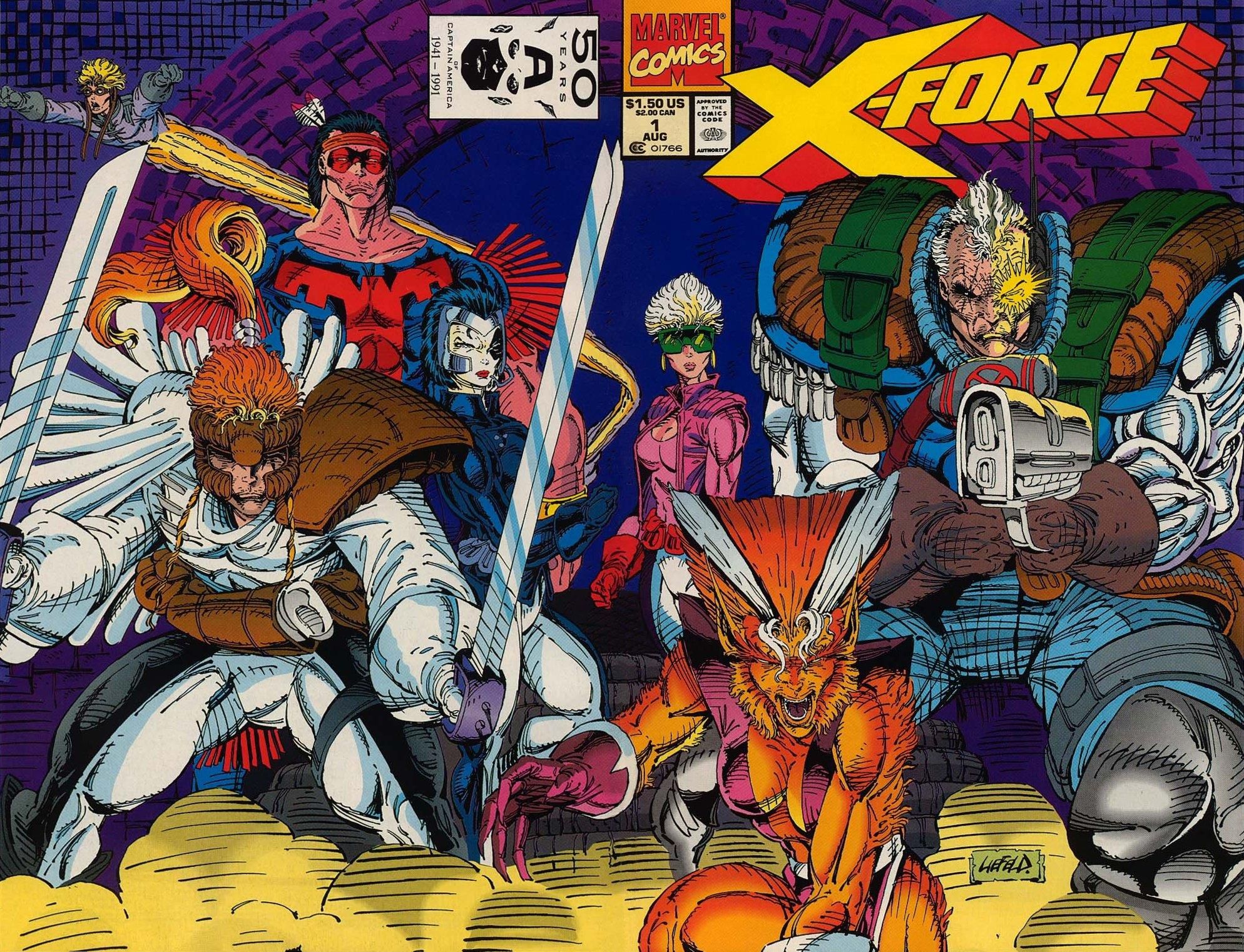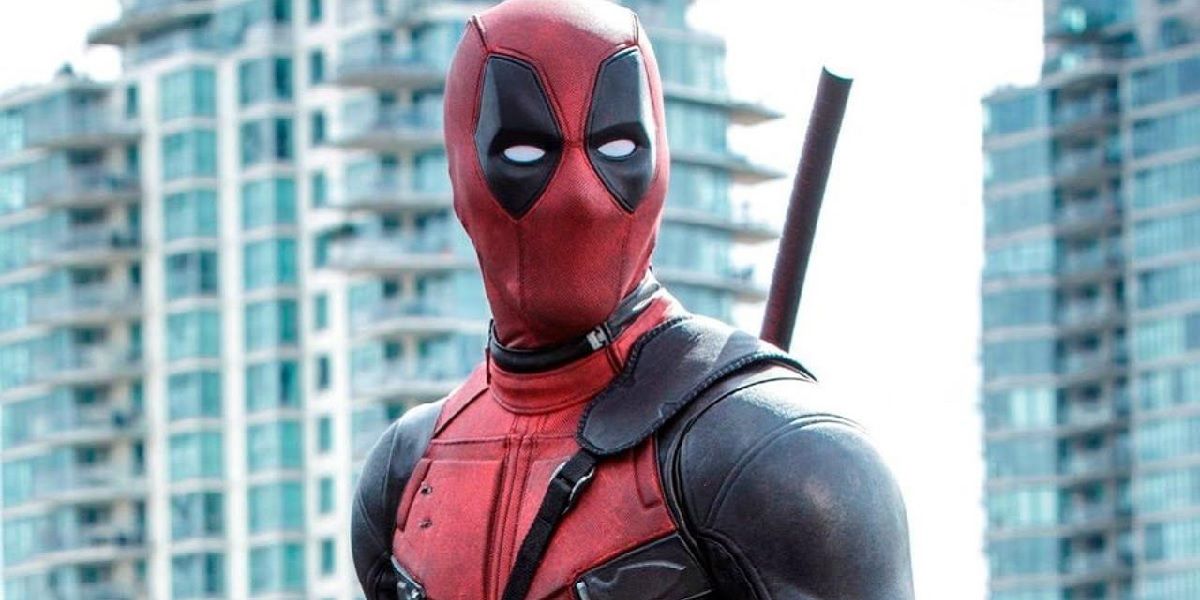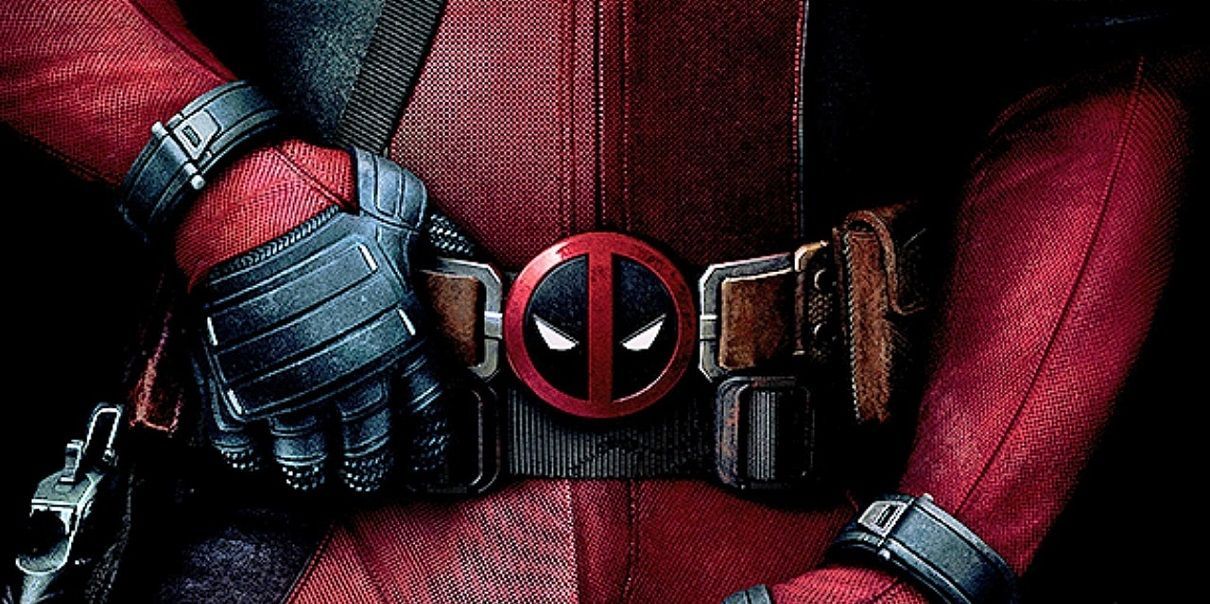Rob Liefeld was one of the hottest comic book artists of the 1990s, creating dozens of new characters and helping completely transform the X-Men franchise for Marvel Comics before embarking with several fellow superstar artists to found Image Comics - upending the industry and changing the face of comics publishing forever.
Ever since the industry's mid-90s boom-period "bubble" burst, he's remained a figure of controversy; with his blunt, unapologetic candor and hyper-stylized art celebrated and criticized in equal measure... but now he's also the toast of Hollywood after Deadpool - an X-Men movie spinoff based on a Marvel character he created in the pages of The New Mutants - became the surprise box office smash hit of 2016 with a timely, deliriously-profane dressing-down of Hollywood's current superhero obsession.
With Deadpool hitting DVD and Blu-ray on May 10, Screen Rant caught up with Liefeld to talk superheroes, Hollywood and a changing comics publishing industry.
So you seem to have had a good year.
Yeah, it’s pretty over the top that’s for sure.
What was it like seeing Deadpool hit the screen after so many years?
Y’know, it has been nothing short of phenomenal. When Tim [Miller] first filmed the proof of concept footage back in 2011, I was at his studios the day that was filmed. And then to come back months later and see the footage play out… at that point it was like “Oh my God, this character – my character! – he’s come to life, he’s punching people!” That was magic. And then to have it stall out was very frustrating, admittedly. But then cut to… movie’s greenlit, we’re in Vancouver, we’re on the set, watching it in real life trying not to pinch myself too hard.
When I first saw that first cut, I knew, like… first of all, the movie looked and played phenomenal. And I knew, I just knew this movie is going to connect in this huge way. Now, did I see this level of success? Not a chance. I was considered “bullish” because I was convinced that it would do $400 million worldwide. That was my big number. And the people - you know, people in the movie business – my friends said “You clearly don’t understand how big that number is.” But no, I do! I’ve got comps, I think it’s going to be a hit! And then to quote Ryan [Reynolds], who I saw at some awards shows, he said “I absolutely believe the movie would be embraced.” And I would stand by that. But [the level of success] was an absolute shocker, still.
But you know, they did the work. And people liked the work. And that was fantastic – kudos to Tim and Ryan and Paul and Simon and the whole team, because they delivered the goods.
At the point when Deadpool appears first in the comics, you seemed to be coming out with four or five new characters every issue of every book. Did you have any inclination that this was going to be “the guy” that just explodes?
Absolutely. I created about thirty new characters for Marvel during my two-year run there, but here’s what I tell people: Not all of them made the cover. If you were on the cover, you were something special. And Deadpool was front and center on the issue he was introduced, just like Cable was front and center on the issue he was introduced. Anytime Deadpool appeared, he was on the cover: X-Force #2, X-Force #10, he was a trading card in X-Force #1 which sold 5 million copies. Deadpool was always supposed to be a big deal, in terms of that universe, and he added a different layer, a level of mystery, a different flavor to what we were doing.
And people responded! To make your debut at the top of the charts like he did – because New Mutants had gone from a “cellar dweller” [“low-selling book”] to… when I came on, absolutely with the intent on making it a hit comic. So by the time #98 came around and they gave me the book to write and dictate the story? We were selling 750,000 copies. That’s a lot of books. That’s a lot of eyeballs. So we moved up [Deadpool’s] storyline, which I was originally going to take a little more time to develop after his first appearance, because they wanted him at the forefront – bad! They saw the fan reaction.
Marvel would forward you your fan-mail back in those days. And so, one day, a box showed up and I thought “Wow, Marvel bought me a washer & dryer! This is awesome, I am really rockin’ a bonus!” But it was just all the mail! They were just… hey, sometimes a character just clicks. I’ve always drawn comparisons to how I reacted to Boba Fett as a kid, seeing the visual of that guy. And Deadpool, from then on in, was always at the fore.
At Marvel, if you were on the cover, you were supposed to be special and there’s impact. And based on that response, not only did Marvel want him moved up… y’know, X-Force #2 sold a million and a half copies! The followup that Summer was the best-selling comic in the industry. And all these years later, X-Force is still the second best-selling comic book of all time. I didn’t think that ranking would last, I thought for sure it’d be bumped down, knocked off, whatever. I mean, they put seventy-something covers on Star Wars last year and I thought that’d be the book to do it – and it didn’t even come close!
So X-Force, how many eyeballs, how many… it just reached an audience like we’d never had, and Deadpool was on the cover of the second issue – he IS the cover of the second issue! The first 12 pages of a 22 page comic is all Deadpool. Because of the fans. Marvel has always been great about that, you know? As a kid, there was that famous moniker: “Because YOU demanded it!” And the fans have always carried Deadpool’s bacon through the fire, from the comic to the spotlight to his miniseries to his regular series to now the movie – and then showing up for the movie!
My favorite moment was The Hollywood Reporter referring to him as an “obscure” comic-book character – they’re such idiots! Like, would you acclimate yourself? Just because you, “cubicle guy,” didn’t know who Deadpool was doesn’t mean the world didn’t know who Deadpool was, y’know? That’s so funny to me. I guess Gandalf and Bilbo were also “obscure” characters prior to being given a film treatment, right? That’s funny stuff, to me. That makes me laugh.
Is Rob Liefeld the most scrutinized modern comic book artist?
Absolutely! 100%! And you can only embrace it. I’ve seen less controversy break men – break people I know. But here’s the deal, man: I called my own shots at a young age. I was like Joe Namath. I pointed at that scoreboard and said “I’m gonna win that game.” When I took over The New Mutants I was gonna win! I was not gonna let Todd McFarlane and Jim Lee outrun me, they had Spider-Man and Wolverine and I had The New freakin’ Mutants. Well, screw that! Let’s paint this house! I’m going to give this whole franchise an upgrade, I’m gonna put Cable and Domino and Deadpool and Shatterstar and… look, I’ve jumped before, okay?
And then I said, “I’ll be the guinea pig who goes out on his own, I’ll be the guy who launches Image Comics!” Because everyone else was concerned with whether it was a good idea or not, and I said “Let’s go right to the wall!”
And now I look back, you know, as a very protective father – protective of my family’s future, our finances, health, insurance – and I get why they were all more concerned. They were married, y’know? They had kids. I was “hot-head Rob!” And you could’ve brought the ire of others. I know I did, my good buddy Jeph Loeb, before he worked with me, told me that in years prior he and his clique hated me, y’know? And they would all – and [Jeph] admitted he was one of them – he tells me, “Robert, it was a place of jealousy.” Right? How come this kid is having all this success? And then my “gang,” my posse, McFarlane, Jim Lee… like any good rock band, we imploded on each other. That’s why I love… you know, all the bands I grew up with like The Eagles, Van Halen… that’s why I tell my son: “Eventually, see, the lead singer is at odds with the bandmates. Especially if you’ve got multiple lead singers like The Eagles! Look out!”
So yeah, I was very scrutinized. And I look back and, yeah, at a young age I painted a target on my back. But LeBron [James] has a target on his back! And Obama! He has a target on him. In this world that we live in now… you could show me that LeBron has painted a target on himself and I’d believe it, because he has a virtual target on him, because it’s that real. And I always prided myself on not letting it effect me – so I absolutely relish it. How awesome is it that so many people care so much? And like I said, I don’t know what the other mindset for that feels like, because I’ve never embraced it. I’ve had to talk my friends off ledges – people who, with just the slightest scrutiny thought the word was coming to an end. But it’s just how you’re built, y’know? It’s how you’re built.
Speaking of comic art, who’s impressing you right now, as a veteran of the industry?
I like the stylized guys, y’know? From Skottie Young to Olivier Coipel – he’s on the new Civil War, he did X-Men/Avengers, Spiderverse – Brandon Graham, who does Prophet for me… I think right now Marvel has the best kind of superhero comic pencillers, and that’s been a tradition… Steve McNiven… guys who do really bold, “designy” comics; or guys like Skottie who do things like – I saw a Punisher he did yesterday, and the legs are tiny and the body is all square and the gun is giant, it’s just great looking!
I like guys who are either exceptionally “pretty” artists or exceptionally bold, anything that’s between that I tend to not get very excited about. But those guys, I mean, everything Coipel draws looks exactly like they should look in, you know, the “atavistic form.” And they’re great storytellers, really great storytellers. The guys I grew up on - Frank Miller, Walt Simonson, John Byrne – great storytellers.
Do you find that today a lot of comics fandom and comics criticism has almost turned against stylized artists, i.e. “everyone’s a professor of anatomy now?”
They certainly did, at the turn of the century, yeah. I went to - there was a San Diego (Comic-Con) in 2002, I believe – that I went to in disguise. My friends said I’d never be able to pull it off. But I had this really elaborate disguise, and it looked ridiculous: What I did was I pulled my hat almost all the way down to my eyeballs, and I had these glasses and a Hawaiian shirt and jeans, not the shorts and t-shirts I’m usually in, and I wore a bag around my chest, put the strap across my chest and waist… and nobody recognized me! My buddy, he was supposed to hold my ticket and meet me, he must’ve walked by me five times.
[With the disguise] I was able to stand at the Marvel booth and the DC booth and hear them do “portfolio abuse.” And yeah, you bet, it was: “We don’t want this Image stuff! We want photo-realism, we want photo-realism. And I think both companies decided that’s the way to go and… you’ve gotta be kidding me! Look, there’s only one Alex Ross, okay? And you can’t split him up into little pieces. I think comics got really dull in the 2000s, because stylization scared publishers. And we’re part of it, because I still hear “Oh, it was because of those Image guys!,” artists feel that they’re less given the spotlight because when we had it we, you know… we quote-unquote “abused it” by taking the power into our own hands [laughs].
I keep coming back to “current” Frank Miller, and… Urgh! I will fight you – I will fight a line of people in a ring – you don’t like Frank’s new stuff? Let’s go! Let’s go right now! He is… the gestures? Storytelling? The page design? It’s superior. If you want your pretty Alex Ross paintings, he’s doing stuff for The Beatles right now in Vegas. He’s out there, you can go find him, and he’s [also] doing some Spider-Man covers. But, again, Walt Simonson? Super stylish. Frank Miller? Super stylish. John Byrne, you know… the first time I thought that American comics had met the manga/anime – the anime I watched and the manga that I read – was John Byrne with all the big big big eyes he put on people (especially women!) All the guys I loved were really stylized, and I was just never somebody who chased the photo stuff. Jack Kirby… the entire breadth of his career is just this unbridled unchained energy on the page, and none of that looks like reality. And that’s stuff I’m drawn to.
But I think – I fully believe the industry is embracing more stylized work now. Stuff like ODY-C at Image? My God, [artist] Christian Ward? Whoa. The stuff Brandon Graham is doing for me on Prophet? Vey stylized. To me, my favorite – fan-favorite – artist of all time who had a limited body of work and some covers was Art Adams. I love the skinny legs and the long waists and the long thighs and skinny ankles. And is there a more stylized artist than Mike Mignola right now? He continues to become a minimalist.
That’s the stuff that’s fun to look at, y’know? That’s the stuff that turns my crank, and I see a lot more of it than I did. We’ve swung back – completely back. You look at what people are doing on Spider-Gwen and Gwenpool and even the [regular] Deadpool artists… some of it looks “underground” influenced, it’s cool, y’know? So I think the art form is in the best place it’s ever been.
(Last Question Time) Is it true there’s still a movie option on “The Godyssey?” [A 1996 Liefeld one-shot featuring, among other things, Jesus Christ climbing off his crucifix for a fist-fight against Zeus that was said to have been picked up for a feature adaptation in 2013]
The Godyssey? Not at this point, no, but boy do I have news to share with you soon – when I can!

